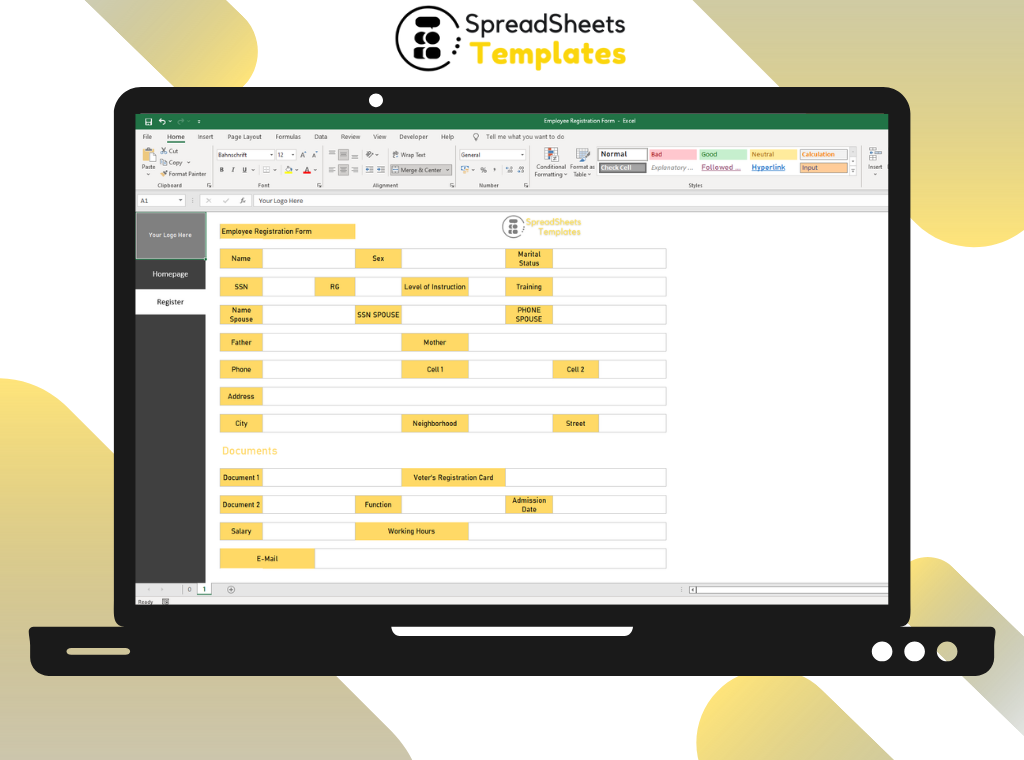Employee Registration Form Leave a comment
Streamlining the Onboarding Process
Introduction
When it comes to hiring new employees, one of the essential steps in the onboarding process is the completion of an employee registration form. This document serves as a crucial tool for organizations to gather pertinent information about their new hires, ensuring compliance with legal requirements and enabling a smooth transition into the company. In this comprehensive guide, we will explore the employee registration form in detail, covering its purpose, components, and best practices to optimize the onboarding process.
Table of Contents
- The Importance of Employee Registration Forms
- Key Components of an Employee Registration Form
- Employee Registration Form: A Step-by-Step Guide
- Common FAQs About Employee Registration Forms
- What information should be included in an employee registration form?
- Are employee registration forms mandatory?
- Can employee registration forms be completed electronically?
- How should sensitive employee information be handled on registration forms?
- What are the consequences of incomplete or inaccurate employee registration forms?
- Are there any legal considerations when designing an employee registration form?
- Best Practices for Optimizing the Employee Registration Process
- Conclusion
1. The Importance of Employee Registration Forms
Employee registration forms play a crucial role in the onboarding process, providing organizations with essential information about their new hires. These forms serve as a legal record of employment and help employers comply with various regulations and requirements, such as tax laws, social security contributions, and benefit enrollment.
By collecting accurate and up-to-date information through employee registration forms, companies can ensure that they have the necessary details to initiate payroll, benefits, and other administrative processes. Additionally, these forms assist employers in maintaining accurate records, allowing for easy retrieval and reference when needed.
2. Key Components of an Employee Registration Form
An effective employee registration form should capture comprehensive details about the new employee. While specific requirements may vary depending on local regulations and company policies, here are some common components to include:
Personal Information
- Full name
- Address
- Contact information (phone number, email address)
Employment Details
- Job title
- Department
- Start date
- Employment status (full-time, part-time, contract, etc.)
Identification and Verification
- Social security number
- Date of birth
- Nationality
- Work authorization status
Emergency Contact Information
- Name and relationship of emergency contact
- Contact number
Tax and Payroll Information
- Tax withholding allowances
- Bank account details for direct deposit
Benefits Enrollment
- Health insurance
- Retirement plans
- Other employee benefits
3. Employee Registration Form: A Step-by-Step Guide
To streamline the employee registration process, follow these steps:
- Prepare the Form: Create a standardized employee registration form that captures all necessary information, ensuring compliance with legal requirements.
- Communicate with the New Employee: Provide the form to the new employee along with clear instructions on how to complete it accurately and efficiently.
- Review and Verify Information: Thoroughly check the submitted form for accuracy and completeness. If any discrepancies or missing information are found, reach out to the employee for clarification.
- Securely Store the Form: Maintain a secure and organized system for storing employee registration forms. Safeguard sensitive personal information in compliance with data protection regulations.
- Initiate Onboarding Processes: Use the information gathered from the employee registration form to initiate payroll, benefits enrollment, and other administrative procedures.
- Follow Up: Periodically review and update employee registration forms to ensure accuracy and address any changes in the employee’s circumstances.
4. Common FAQs About Employee Registration Forms
1. What information should be included in an employee registration form?
An employee registration form should include personal information, employment details, identification and verification data, emergency contact information, tax and payroll details, and benefits enrollment.
2. Are employee registration forms mandatory?
While specific requirements may vary by jurisdiction, employee registration forms are typically mandatory to comply with legal obligations and initiate various administrative processes.
3. Can employee registration forms be completed electronically?
Yes, employee registration forms can be completed electronically using secure online platforms or HR software. Ensure compliance with relevant data protection laws when opting for electronic submissions.
4. How should sensitive employee information be handled on registration forms?
Sensitive employee information, such as social security numbers and bank account details, should be handled with utmost care. Employers should establish secure protocols for collecting, storing, and transmitting this information to protect employee privacy.
5. What are the consequences of incomplete or inaccurate employee registration forms?
Incomplete or inaccurate employee registration forms can lead to administrative errors, delays in payroll processing, and challenges in benefits enrollment. They may also result in compliance issues and potential legal ramifications.
6. Are there any legal considerations when designing an employee registration form?
When designing an employee registration form, it is crucial to consider local labor and data protection laws to ensure compliance. Seek legal guidance to ensure the form meets all applicable legal requirements.
5. Best Practices for Optimizing the Employee Registration Process
To optimize the employee registration process, consider the following best practices:
- Streamline the form: Keep the form concise and user-friendly, focusing on capturing essential information.
- Provide clear instructions: Include instructions that guide employees through each section of the form to minimize errors and omissions.
- Ensure data security: Implement robust security measures to protect sensitive employee information from unauthorized access or breaches.
- Offer electronic submission options: Provide employees with the option to complete and submit forms electronically for convenience and efficiency.
- Regularly update forms: Periodically review and update the employee registration form to reflect any changes in legal requirements or company policies.
- Train HR staff: Ensure HR staff members are well-versed in the employee registration process to assist employees and handle sensitive information appropriately.
Conclusion
The employee registration form is a vital component of the onboarding process, enabling organizations to collect essential information about new employees. By streamlining this process and ensuring accurate and complete data collection, companies can lay a solid foundation for successful employee integration. Remember to adhere to legal requirements, implement best practices, and prioritize data security to optimize the employee registration process and foster a positive onboarding experience.


